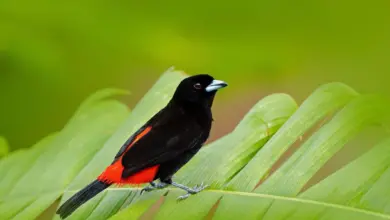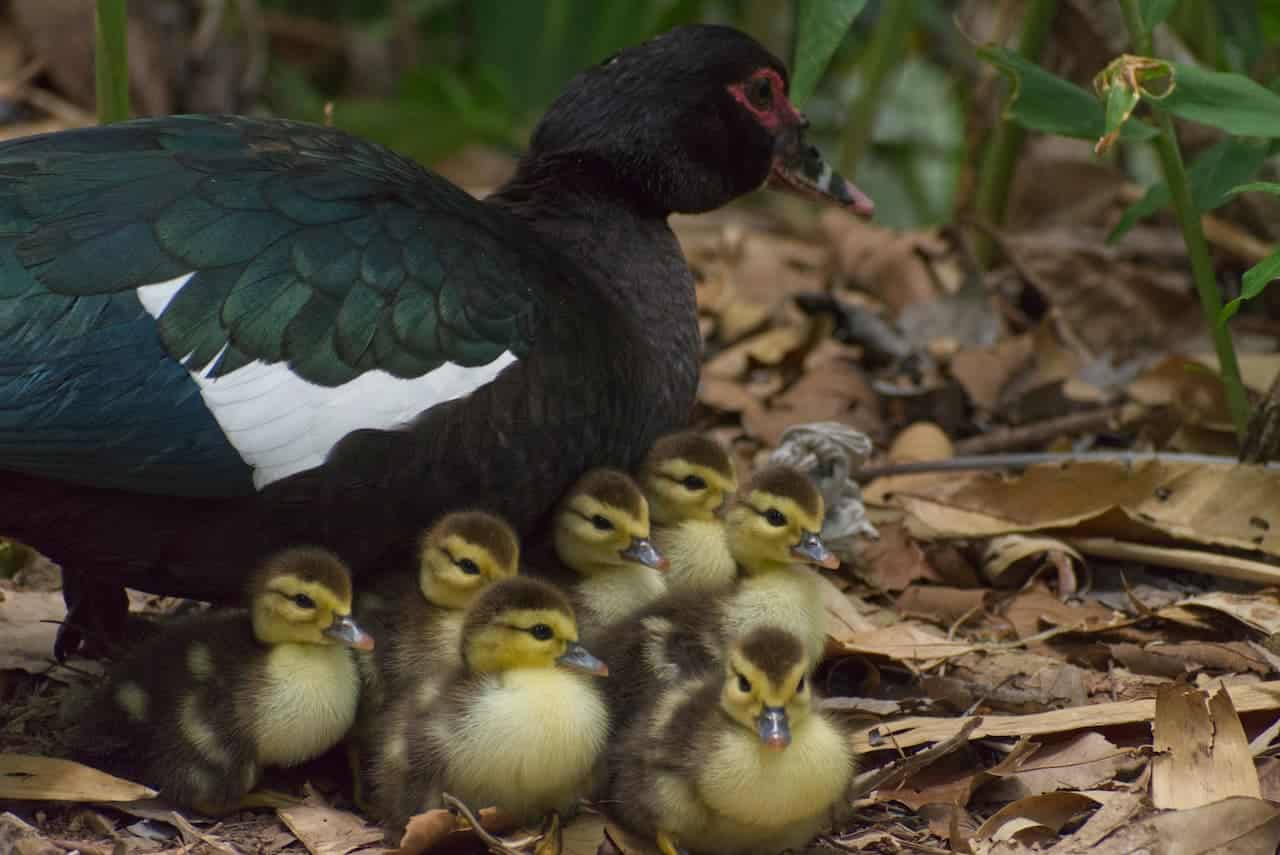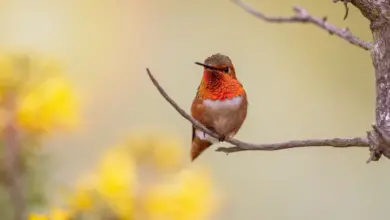Xantus’s Hummingbirds
Xantus’s Hummingbirds (Hylocharis xantusii syn. Basilinna xantusi) – also known as the Black-fronted Hummingbird – is a Mexican, medium-sized hummingbird. It was named after John Xantus de Vesey (Xantus János), a Hungarian zoologist.

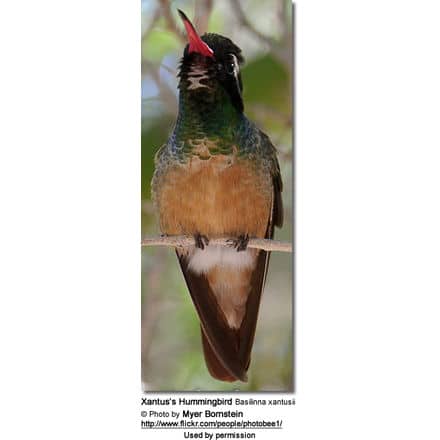
Alternate (Global) Names
Spanish: Chupaflor peninsular, Colibri de Xantus, Colibrí de Xantus, Zafiro de Pecho Negro, Zafiro de Xantusi … Chinese: ???? … French: Basilinna xantusii, Colibri de Xantus, Saphir de Xanthus, Saphir de Xantus … Italian: Colibrì di Xantus, Colibrì frontenera … Japanese: kurobitaisafaiahachidori, ??????????????… German: Schwarzstirnsaphir, Schwarzstirn-Saphir, Schwarzstirn-Saphirkolibri … Finnish: Naamiosafiirikolibrí … Danish: Sortisset Safir … Czech: Kolibrík modrohrdlý, kolib?ík pruholíc … Dutch: Cactuskolibrie … Norwegian: Bajakolibri … Polish: szafirek rudobrzuchy … Russian: ?????????? ?????? … Slovak: kolibrík ciernocelý … Swedish: Xantuskolibri
Distribution / Range
The Xantus’s Hummingbirds are native to the southern Baja Peninsula of Mexico (Baja California) and Jacques Cousteau Island aka Cerralvo Island (an uninhabited island located off the coast of the Cerralvo Channel in Baja California Sur). They sporadically visit the Isla San José (an island in the Gulf of California, off the east coast of the Baja California peninsula).
They are vagrants in southern California, where some nesting activities have been reported. Some travel up the Pacific coast of North America to British Columbia in Canada.
Their natural habitats include arid scrub, desert, mesquite trees, and backyards with their favored feeding plants or attracted by hummingbird feeders.
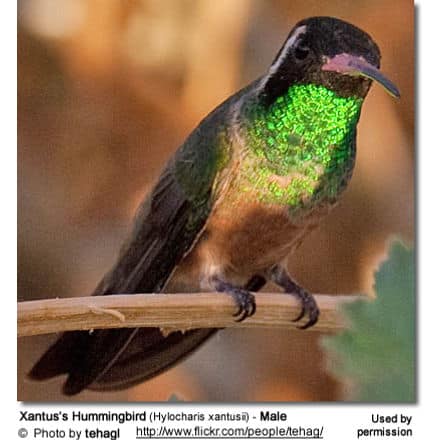

Description
The Xantus’s Hummingbirds measure 3 – 3.5 inches (8 – 9 cm) in length – including bill and tail. It weighs approximately 0.1 – 0.14 oz (3 – 4 g).
The upper plumage is mostly green. The dark tail is straight. Both males and females have a distinctive white eyestripe, with a black eyestripe below the white one. The plumage below is cinnamon brown.
Male and female differences:
- Throat: The female has a brownish throat and the male’s throat is green.
- Head: The male’s crown and face is bluish-black. The female’s is lighter, with brown-cinnamon coloration below the eye stripe.
- The bill of both genders is long and slender with a very slight down-curve. The male’s bill is red with a black tip; the female’s bill is dark (blackish)
Nesting / Breeding
Hummingbirds are solitary in all aspects of life other than breeding, and the male’s only involvement in the reproductive process is the actual mating with the female. They neither live nor migrate in flocks, and there is no pair bond for this species. Males court females by flying in a U-shaped pattern in front of them. He will separate from the female immediately after copulation. One male may mate with several females. In all likelihood, the female will also mate with several males. The males do not participate in choosing the nest location, building the nest, or raising the chicks.
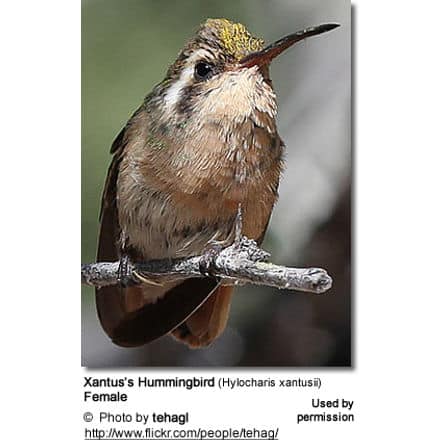
The female is responsible for building the cup-shaped nest out of plant fibers woven together and green moss on the outside for camouflage in a protected location in a shrub, bush, or tree. She lines the nest with soft plant fibers, animal hair, and feathers down, and strengthens the structure with spider webbing and other sticky material, giving it an elastic quality to allow it to stretch to double its size as the chicks grow and need more room. The nest is typically found on a low, thin horizontal branch.
The average clutch consists of two white eggs, which she incubates alone, while the male defends his territory and the flowers he feeds on. The young are born blind, immobile, and without any down.
The female protects and feeds the nestlings with regurgitated food (mostly partially-digested insects since nectar is an insufficient source of protein for the growing chicks). The female pushes the food down the chicks’ throats with her long bill directly into their stomachs.
She broods the chicks only the first week or two, and then they are left alone even on cooler nights after about 12 days – probably due to the small nest size. The chicks leave the nest when they are about 20 days old.
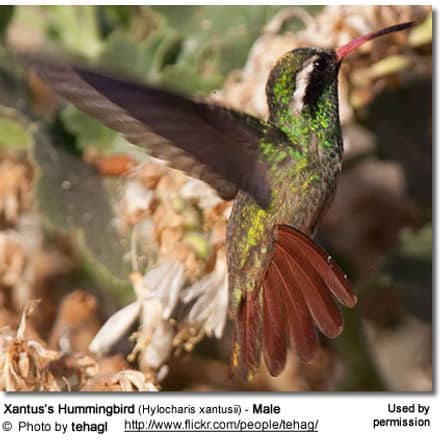
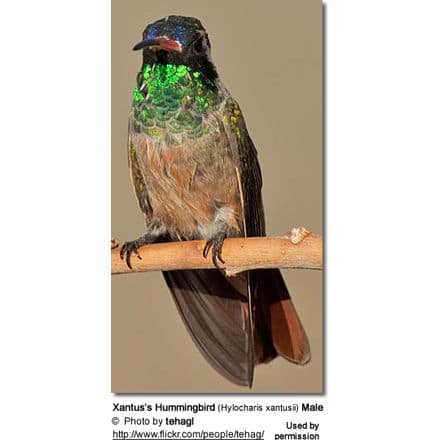
Diet / Feeding
The Xantus’s Hummingbirds primarily feed on nectar taken from a variety of brightly colored, scented small flowers of trees, herbs, shrubs, and epiphytes. They favor flowers with the highest sugar content (often red-colored and tubular-shaped) and seek out, and aggressively protect, those areas containing flowers with high-energy nectar. They use their long, extendible, straw-like tongues to retrieve the nectar while hovering with their tails cocked upward as they are licking at the nectar up to 13 times per second. Sometimes they may be seen hanging on the flower while feeding.
Many native and cultivated plants on whose flowers these birds feed heavily rely on them for pollination. The mostly tubular-shaped flowers exclude most bees and butterflies from feeding on them and, subsequently, from pollinating the plants.
They may also visit local hummingbird feeders for some sugar water, or drink out of bird baths or water fountains where they will either hover and sip water as it runs over the edge; or they will perch on the edge and drink – like all the other birds; however, they only remain still for a short moment.
They also take some small spiders and insects – important sources of protein particularly needed during the breeding season to ensure the proper development of their young. Insects are often caught in flight (hawking); snatched off leaves or branches, or taken from spider webs. A nesting female can capture up to 2,000 insects a day.
Males establish feeding territories, where they aggressively chase away other males as well as large insects – such as bumblebees and hawk moths – that want to feed in their territory. They use aerial flights and intimidating displays to defend their territories.
Species Research by Sibylle Johnson
Hummingbird Metabolism and Survival and Flight Adaption – Interesting Information

